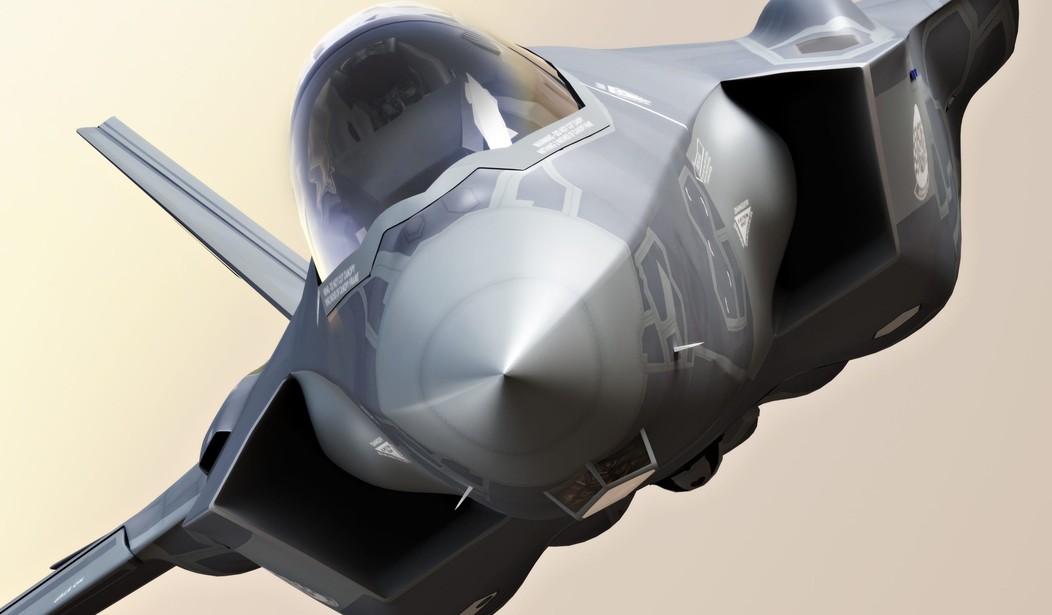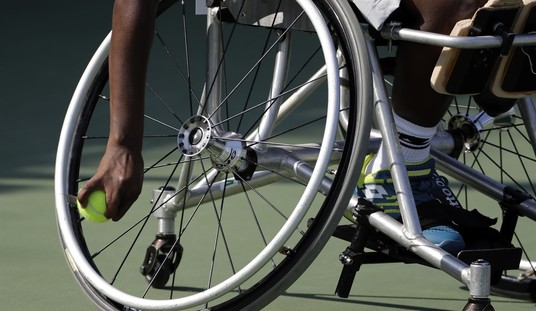National Interest’s Dave Majumdar takes a look at what might happen in the unlikely event that a new president were to get fed up with the F-35’s cost overruns and delays — and just canceled the thing:
For the U.S. Air Force, the most obvious alternative would be to resurrect the Lockheed Martin F-22 Raptor. While reconstituting the production line would be expensive and difficult, it could be done. The U.S. Air Force stored the tooling for the aircraft—and while that storage process has problems, it’s not an insurmountable challenge. The more difficult problem will be the subcomponents. Indeed, most of the Raptor’s antiquated computer hardware hasn’t been built in years. However, a fleet of four hundred new F-22 Raptors would give the service a force capable of knocking down the door for follow-on conventional fighters such as upgraded or even new Lockheed F-16s or Boeing F-15E Strike Eagles.
The Navy—which has always been lukewarm toward the F-35C—could continue to buy advanced derivatives of the Boeing F/A-18E/F Super Hornet. In fact, Boeing has already pitched such an aircraft. Longer term, the service could restart a long-range unmanned stealth bomber program. A stealthy long-range unmanned strike aircraft is probably what the service needs to defeat the emerging anti-access/area-denial challenge in the Western Pacific.
The U.S. Marine Corps would have to either buy the Super Hornet or leave the fixed-wing tactical fighter business without the F-35B. However, the Navy and Marine Corps are closely linked and the service would probably opt for the Super Hornet before giving up most of its air arm.
Operationally, it would seem that part of the job of aircraft carrier air wing could be taken over by an enlarged fleet of F-22s and submarine-launched Tomahawk missiles. The Raptors would destroy anything in the air, while the Tomahawks targeted enemy air bases and antiaircraft missile sites. The job of the CVN air wings would be limited to the kind of sustained bombing operations which missile boats can’t do and the F-22 is unsuited for. The Navy might be able to get the mission done with unstealthy F-18s, provided that enough Raptors and TLAMs were available for the initial “kick down the door” phase of operations.
What to do with the Marine Corps’ fixed-wing air arm is trickier.
Majumdar says the Corps “would probably opt for the Super Hornet,” but that just isn’t completely possible. The Marines have their own mini aircraft carriers — “assault ships” — which lack the full-sized decks (not to mention launch catapults and arresting gear) required by the F-18. Instead, the Marines rely on vertical or short takeoff and landing (V/STOL) jets like the AV-8B Harriers and the F-35B. But the Harriers, which were never all that reliable, are getting too old to fly much longer. Take away the F-35B as Majumdar posits, and in a few years the Marines would be left without any seamobile ground attack jets, as the aging Harriers are retired.
Maybe then for the Marines, the best bet might be an expanded fleet of up-armed V-22 Ospreys — stick a big gun and some missiles on it, and call it the A/V-22. Or maybe the A/V-22 would turn out not to be feasible. Although Bell Boeing is already working on an up-armed Osprey, it might be too big a stretch to convert a people-mover platform into a ground-pounder. In that case, an all-new attack tiltrotor might still be easier to design, cheaper to build, and better suited to the Marine Corps’ needs than the F-35B is.
Your thoughts?









Join the conversation as a VIP Member